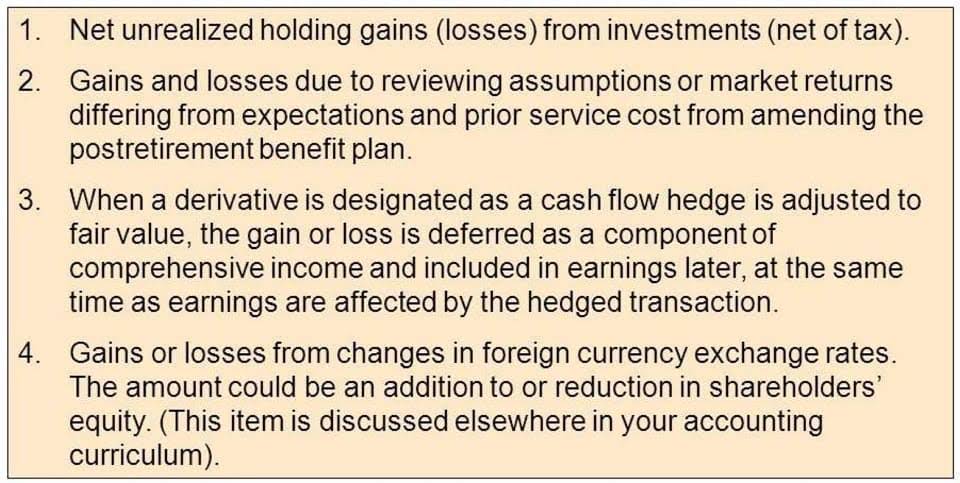Capitalize vs Expense Cost Accounting Rules + Examples
In this case, the asset account stays recorded at the historical value but is offset on the balance sheet by accumulated depreciation. Accumulated depreciation is subtracted from the historical cost of the asset on the balance sheet to show the asset at book value. Book value is the amount of the asset that has not been allocated to expense through depreciation. Businesses typically need many different types of these assets to meet their objectives. For example, the computers that Apple, Inc. intends to sell are considered inventory (a short-term asset), whereas the computers Apple’s employees use for day-to-day operations are long-term assets. In Liam’s case, the new silk screen machine would be considered a long-term tangible asset as they plan to use it over many years to help generate revenue for their business.
- If a company borrows funds to construct an asset, such as real estate, and incurs interest expense, the financing cost is allowed to be capitalized.
- The purpose of capitalizing a cost is to match the timing of the benefits with the costs (i.e. the matching principle).
- For example, if we buy a delivery truck to use for the next five years, we would allocate the cost and record depreciation expense across the entire five-year period.
In accounting, typically a purchase is recorded in the time accounting period in which it was bought. However, some expenses, such as office equipment, may be usable for several accounting periods beyond the one in which the purchase was made. These fixed assets are recorded on the general ledger as the historical cost of the asset. A portion of the cost is then recorded during each quarter of the item’s usable life in a process called depreciation. If a long-term asset is used in the business’s operations, it will belong in property, plant, and equipment or intangible assets. These items are fixed assets, such as computers, cars, and office buildings.
R&D Capitalization vs Expense
Depreciation records an expense for the value of an asset consumed and removes that portion of the asset from the balance sheet. Under GAAP, certain software costs can be capitalized, such as internally developed software costs. On the other hand, if the purchase (and the corresponding benefit) is expected to be depleted within one year, it should be expensed in capitalized vs expensed the period incurred. R&D spending can vary widely from one year to another, which has a significant impact on a company’s profitability. Many businesses in the technology, healthcare, consumer discretionary, energy, and industrial sectors experience this problem. He has a CPA license in the Philippines and a BS in Accountancy graduate at Silliman University.
Now or Later? A brief look at Expensing vs. Capitalizing
Capitalization is an accounting method in which a cost is included in the value of an asset and expensed over the useful life of that asset, rather than being expensed in the period the cost was originally incurred. In addition to this usage, market capitalization refers to the number of outstanding shares multiplied by the share price, which is a measure of the total market value of a company. Therefore, the expenses from acquiring these resources are recorded as assets in the company’s balance sheet. The costs will then show on the balance sheet in the coming financial years through amortisation or depreciation.
Long-term assets that are not used in daily operations are typically classified as an investment. For example, if a business owns land on which it operates a store, warehouse, factory, or offices, the cost of that land would be included in property, plant, and equipment. However, if a business owns a vacant piece of land on which the business conducts no operations (and assuming no current or intermediate-term plans for development), the land would be considered an investment. When capitalizing an asset, the total cost of acquiring the asset is included in the cost of the asset. This includes additional costs beyond the purchase price, such as shipping costs, taxes, assembly, and legal fees. For example, if a real estate broker is paid $8,000 as part of a transaction to purchase land for $100,000, the land would be recorded at a cost of $108,000.
For example- if there is a cost of repairs to bring the machinery back to the same condition, there is no future economic value-added, then this cost is treated as an expense. Tax authorities scrutinise company’s decisions to capitalise vs. expense carefully and you need to be able to properly justify your accounting decisions. While the above method can be used to tweak your company’s financial statement, you don’t want to be overly aggressive with your accounting tactics. These are non-monetary resources, which have no physical substance yet still provide the company a benefit. These could be items such as research and development costs or patents and copyrights.
If the company upgrades part of the tools, property or equipment it uses, in a manner that directly increases the value of the asset, it could be capitalised. As we’ll discuss later in the guide, this lack of a set https://personal-accounting.org/ of lists has both advantages and disadvantages to a business. Capitalizing vs. expensing provides companies with opportunities to influence the company’s profits, directly influencing over the income statement.
Due to operational changes, the depreciation expense needs to be periodically reevaluated and adjusted. A lack of R&D capitalization could mean that their total assets or their total invested capital do not properly reflect the amount that has been invested into them. As a result, there can be an impact on the company’s Return on Assets (ROA) and Return on Invested Capital (ROIC). Below, we analyze the practice of capitalizing R&D expenses on the balance sheet versus expensing them on the income statement. In accounting, capitalization is an accounting rule used to recognize a cash outlay as an asset on the balance sheet rather than an expense on the income statement.
When to Capitalize vs. Expense Costs on a Construction Project
For a four-year asset, multiply 25 percent (100%/4-year life)×2(100%/4-year life)×2, or 50 percent. For a five-year asset, multiply 20 percent (100%/5-year life)×2(100%/5-year life)×2, or 40 percent. Generally accepted accounting principles, or GAAP, allows costs to be capitalized only if they have the potential to increase the value or can extend the useful life of an asset. Let’s assume the following income statement figures over the next five years if the $10,000 subsequent cost is capitalized along with the $50,000 purchase price. Depreciation is the process of allocating the cost of a tangible asset over its useful life, or the period of time that the business believes it will use the asset to help generate revenue. This process will be described in Explain and Apply Depreciation Methods to Allocate Capitalized Costs.
It’s also key to note that companies will capitalize a fixed asset if they have material value. A $10 stapler to be used in the office, for example, may last for years, but the value of the item is not significant enough to warrant capitalizing it. Depreciation expense is a common operating expense that appears on an income statement. It represents the amount of expense being recognized in the current period. Accumulated depreciation, on the other hand, represents the sum of all depreciation expense recognized to date, or the total of all prior depreciation expense for the asset. It is a contra account, meaning it is attached to another account and is used to offset the main account balance that records the total depreciation expense for a fixed asset over its life.
Let’s look at the effect on the financial statements if we capitalize vs expense the $10,000 in subsequent costs. Financial statements can be manipulated when a cost is wrongly capitalized or expensed. If a cost is incorrectly expensed, net income in the current period will be lower than it otherwise should be.
It would also be different if they were purchasing or building property for their own business use, such as a warehouse — or even technology like tablets and software. In this case, they might also capitalize related costs, including interest on financing. For example, Build-It Construction Co.’s equipment rental doesn’t fit those two criteria above. Depending on how they’re recognizing job revenue, lumber or paint used on a regularly invoiced project wouldn’t fit the bill either.
What is Expensing?
For example, payroll costs for employees directly involved in constructing a new facility should generally be allocated to that specific asset and capitalized accordingly. We get asked fairly often, “Can I deduct this if I spend the money this year? ” If you haven’t noticed or haven’t had reason to notice, the US tax code is riddled with carve-outs, exceptions, and exceptions to the exceptions. So, if you are unsure of whether something should be deducted (expensed) or capitalized, it is best to ask your tax pro. I will attempt here to provide a basic outline of some of the different cases of when to expense vs. capitalize, but as always, this is general information and should not be seen as advice specific to your situation.
As traditional value factors and value investing, in general, lose their luster, investors have turned to old tricks, such as capitalizing expenses, to justify buying stocks at overvalued levels. An expense is a monetary value leaving the company; this would include something like paying the electricity bill or rent on a building. Companies with a high market capitalization are referred to as large caps; companies with medium market capitalization are referred to as mid-caps, while companies with small capitalization are referred to as small caps. There are strict regulatory guidelines and best practices for capitalizing assets and expenses. Most companies have an asset threshold, in which assets valued over a certain amount are automatically treated as a capitalized asset.
When a small company starts, it must create a capitalization strategy that outlines how the company will use its scarce resources to start operations. Based on initial forecasts, business owners may project how much financing they need to ensure profitability and sustainability until the company can be self-sustaining. Whether it is raising equity from a private investor, applying for debt, or contributing personal capital, these funding sources combined comprise of the capitalization strategy. Even if you are able to capitalise parts of your research costs, full capitalisation will often cause red flags for the taxman.


